Carotenoids: Dietary Sources, Extraction, Encapsulation, Bioavailability, and Health Benefits-A Review of Recent Advancements
- PMID: 35453480
- PMCID: PMC9025559
- DOI: 10.3390/antiox11040795
Carotenoids: Dietary Sources, Extraction, Encapsulation, Bioavailability, and Health Benefits-A Review of Recent Advancements
Abstract
Natural carotenoids (CARs), viz. β-carotene, lutein, astaxanthin, bixin, norbixin, capsanthin, lycopene, canthaxanthin, β-Apo-8-carotenal, zeaxanthin, and β-apo-8-carotenal-ester, are being studied as potential candidates in fields such as food, feed, nutraceuticals, and cosmeceuticals. CAR research is advancing in the following three major fields: (1) CAR production from natural sources and optimization of its downstream processing; (2) encapsulation for enhanced physical and chemical properties; and (3) preclinical, clinical, and epidemiological studies of CARs' health benefits. This review critically discusses the recent developments in studies of the chemistry and antioxidant activity, marketing trends, dietary sources, extraction, bioaccessibility and bioavailability, encapsulation methods, dietary intake, and health benefits of CARs. Preclinical, clinical, and epidemiological studies on cancer, obesity, type 2 diabetes (T2D), cardiovascular diseases (CVD), osteoporosis, neurodegenerative disease, mental health, eye, and skin health are also discussed.
Keywords: astaxanthin; cancer; cardiovascular diseases (CVDs); diabetes; lycopene; microalgae; neurodegenerative disease; pigments; vitamin A; β-carotene.
Conflict of interest statement
The authors declare no conflict of interest.
Figures

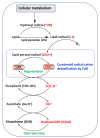
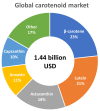
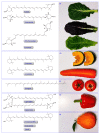
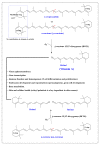
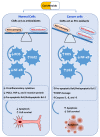

Similar articles
-
Carotenoids Production: A Healthy and Profitable Industry.Methods Mol Biol. 2018;1852:45-55. doi: 10.1007/978-1-4939-8742-9_2. Methods Mol Biol. 2018. PMID: 30109623 Review.
-
Detection of bixin, lycopene, canthaxanthin, and beta-apo-8'-carotenal in products derived from red pepper.J AOAC Int. 1995 Mar-Apr;78(2):491-6. J AOAC Int. 1995. PMID: 7756865
-
Comprehensive Update on Carotenoid Colorants from Plants and Microalgae: Challenges and Advances from Research Laboratories to Industry.Foods. 2023 Nov 10;12(22):4080. doi: 10.3390/foods12224080. Foods. 2023. PMID: 38002140 Free PMC article. Review.
-
Chemistry, Occurrence, Properties, Applications, and Encapsulation of Carotenoids-A Review.Plants (Basel). 2023 Jan 9;12(2):313. doi: 10.3390/plants12020313. Plants (Basel). 2023. PMID: 36679026 Free PMC article. Review.
-
In vitro antimutagenic and in vivo anticlastogenic effects of carotenoids and solvent extracts from fruits and vegetables rich in carotenoids.Mutat Res. 1998 Mar 16;413(2):129-42. doi: 10.1016/s1383-5718(98)00017-5. Mutat Res. 1998. PMID: 9639691
Cited by
-
β-carotene genetically-enriched lyophilized orange juice increases antioxidant capacity and reduces β-amyloid proteotoxicity and fat accumulation in Caenorhabditis elegans.Food Chem (Oxf). 2022 Oct 17;5:100141. doi: 10.1016/j.fochms.2022.100141. eCollection 2022 Dec 30. Food Chem (Oxf). 2022. PMID: 36304081 Free PMC article.
-
Profiling of Redox-Active Lipophilic Constituents in Leaf Mustard (Brassica juncea (L.) Czern.) Cultivars Using LC-MS and GC-MS.Antioxidants (Basel). 2022 Dec 14;11(12):2464. doi: 10.3390/antiox11122464. Antioxidants (Basel). 2022. PMID: 36552672 Free PMC article.
-
Nutritional, bioactive compounds content, and antioxidant activity of brown seaweeds from the Red Sea.Front Nutr. 2023 Jul 26;10:1210934. doi: 10.3389/fnut.2023.1210934. eCollection 2023. Front Nutr. 2023. PMID: 37565040 Free PMC article.
-
The micronutrient content of the diet is correlated with serum glucose biomarkers and lipid profile and is associated with the odds of being overweight/obese-a case-control study.Front Nutr. 2023 Jun 29;10:1148183. doi: 10.3389/fnut.2023.1148183. eCollection 2023. Front Nutr. 2023. PMID: 37457985 Free PMC article.
-
Antioxidant Intake and Biomarkers of Asthma in Relation to Smoking Status-A Review.Curr Issues Mol Biol. 2023 Jun 10;45(6):5099-5117. doi: 10.3390/cimb45060324. Curr Issues Mol Biol. 2023. PMID: 37367073 Free PMC article. Review.
References
-
- Aune D., Giovannucci E., Boffetta P., Fadnes L.T., Keum N., Norat T., Greenwood D.C., Riboli E., Vatten L.J., Tonstad S. Fruit and vegetable intake and the risk of cardiovascular disease, total cancer and all-cause mortality—A systematic review and dose-response meta-analysis of prospective studies. Int. J. Epidemiol. 2017;46:1029–1056. doi: 10.1093/ije/dyw319. - DOI - PMC - PubMed
Publication types
Grants and funding
LinkOut - more resources
Full Text Sources

